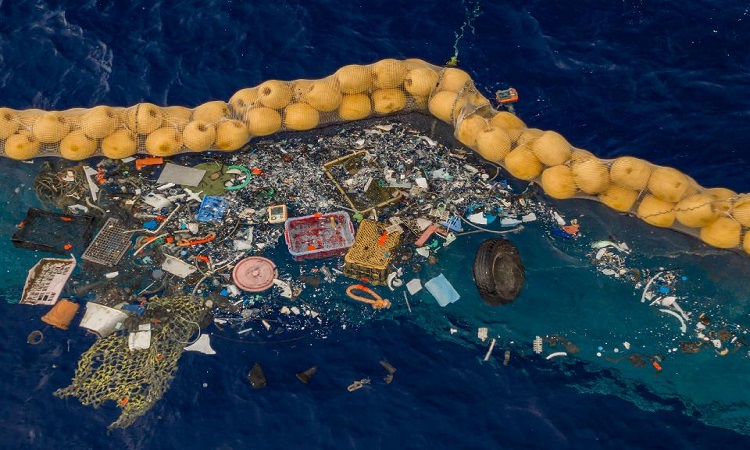A new test conducted as part of the Ocean Cleanup project was successfully completed. After the failure of last year, plastic was collected efficiently and on a large scale for the very first time!
The failure of 2018
The last time we mentioned the floating barrier of the Ocean Cleanup project, it was late last year. On September 8, 2018, System 001 was deployed off San Francisco. It is a submarine net 3 meters deep attached to a U-shaped pipe (or horseshoe) 600 meters long. The goal was to collect the waste and collect it until ships brought it back to the mainland for treatment. This test barrier was the first in a series of 60!
Unfortunately, this test ended in failure. Indeed, the plastic waste moved faster than the barrier, so that the latter had time to emerge U-shaped pipe. Two problems had been identified. This was the oscillation of the ends of the floating barriers slowing down the entire installation. There was also vibration at the ends of the pipe, pushing back the plastic. Thus, these defects seem to have been corrected, according to a Guardian article published on October 3, 2019.
Success at the rendezvous
There is talk of a new test phase that has been successful. At the origin of this project, the Dutchman Boyan Slat declared to have collected plastic on a large scale for the first time in the Pacific Ocean. The person concerned considers that the device will finally be able to assume the objectives of the project. Let’s remember that it is about to empty by half in 5 years and at a rate of 15,000 tons per year “the big zone of garbage of the Pacific”, located between California and Hawaii. It is one of five oceanic gyres (North Pacific) trapping many plastic waste.
The other gyres are found in the South Pacific, the North and South Atlantic and the Indian Ocean. These vortices do not concentrate plastics alone. Indeed, a study dating back to 2014 already estimated that 88% of the surface of the oceans was concerned! In addition, micro-plastics have reached the depths of the oceans.




